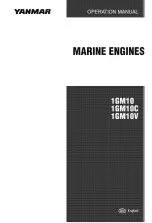
Technical data and characteristics
6.1 Explanations
1FW6 High Speed built-in torque motors
142
Configuration Manual, 01/2020, 6SN1197-0AE03-0BP3
p
Number of pole pairs of the motor.
M
COG
Cogging torque. This is the torque generated by the interaction between the
laminated core and permanent magnets at the air gap in stators that have been
disconnected from the power supply.
The cogging torque can be calculated as follows:
Here, a
1
to a
n
are the amplitudes of the torque harmonics.
m
s
Mass of the stator without fixing screws, connectors, connection cables, and
coolant.
m
L
Mass of the rotor without fixing screws.
J
L
Rotor moment of inertia.
R
STR,20
Phase resistance of the winding at a winding temperature of 20 °C.
The value of the phase resistance is required for calculating the power loss,
among other things. R
20
can be converted for other phase resistances as follows:
R
STR
(T) = R
STR,20
∙
[1 +
α
(T – 20 °C)]
with the temperature coefficients
α
= 0.00393
∙
1/K for copper.
The following applies for R
STR,130
: R
STR,130
= R
STR,20
∙
1.4323.
L
STR
Phase inductance of the stator winding with integrated fan.
Data for main motor cooler
Q
H,MAX
Maximum thermal power that is dissipated by the main cooler when the motor is
utilized up to the rated torque M
N
and at the rated temperature T
N
.
H,MIN
Recommended minimum volume flow rate in the main cooler to achieve the rated
torque M
N
.
Δ
T
H
The temperature increase of the cooling medium between the inlet and return flow
circuit of the main cooler at the operating point Q
H,MAX
and
H,MIN
can be estimated
with the following formula:
Average density of water:
ρ
= 1000 kg/m
3
Average specific thermal capacity of water: c
p
= 4.18 · 10
3
J/(kg K)
Temperature change with respect to the inlet temperature:
Δ
T
H
in K
Volume flow rate: in m
3
/s
Summary of Contents for 1FW6092-2PC15-6AB3
Page 1: ...1FW6 High Speed built in torque motors ...
Page 2: ......
Page 299: ......
Page 300: ......
















































